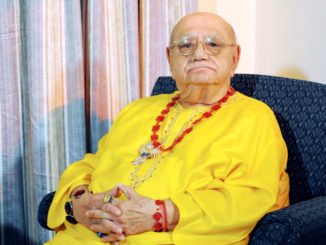

“About two decades ago, as the country ushered into an era of coalition politics at the center, this political tool gained extra significance. Since the concept of minority governments has never been experimented in the country, demand to win over support of parties with smaller numbers of successful candidates has been escalating in situations of hung legislatures – State Assemblies or even Lok Sabha. Any party making a claim to form a government needs numbers. Though the 2019 Lok Sabha election saw BJP getting a clear majority, the numbers game in general and the coalition politics in particular, has been continuing with unabated vigor.”
History of the “coalitions” in Punjab is as old as the first elections to the State Assembly in 1952. Interestingly, a key participant in each coalition has been the Shiromani Akali Dal.
Punjab is different. Every time there are elections in the country, this border state, ravaged by several external and internal assaults, injects something new into the body politic. It has always been on the forefront. Be it fight against drugs, terrorist attacks from across the border or battle against the Centre to get farm laws repealed, Punjab remains on world focus.
Is Punjab heading for a new ruling alliance after the collapse of the oldest – SAD-BJP – coalition? Elections 2022 hold the answer.
Though elections are a natural democratic process that happens every five years, it is Punjab elections that generate considerate attention. It is why the battle lines for elections are drawn long before the announcement of the poll schedules. Realizing that no electoral battle could be won without numbers, leaders of all parties, national and regional, new and old, not only make a beeline to the State but also engage strategists and social media experts to win over the electors. Numbers, undisputedly, is one single tool to measure success in electoral politics. The number of votes polled, or number of seats won by a political outfit or alliance decide the new rulers of a State or a nation. Punjab has a mix of numbers. Its representation in national politics is miniscule. But even a small number of MPs has not diminished the political stakes of the State as it has already produced a President and a Prime Minister of the country. Punjab has less than two per cent of the country’s population, but its people have been successful in demonstrating how to use numbers to their advantage.
About two decades ago, as the country ushered into an era of coalition politics at the center, this political tool gained extra significance. Since the concept of minority governments has never been experimented in the country, demand to win over support of parties with smaller numbers of successful candidates has been escalating in situations of hung legislatures – State Assemblies or even Lok Sabha. Any party making a claim to form a government needs numbers. Though the 2019 Lok Sabha election saw BJP getting a clear majority, the numbers game in general and the coalition politics in particular, has been continuing with unabated vigor.
Punjab, with 13 members in the 547-member Lok Sabha – a little less than 3 per cent, that, statistically speaking may be miniscule in the national politics – has been playing an aggressive role, thanks to coalitions. The coalitions in Punjab have been a rare and successful model where one partner is a national party while the other a regional.
It is pertinent to mention how one Akali Dal MP Sukhdev Singh Libra, owing allegiance to BJP-led NDA, was lured to save the UPA government led by Manmohan Singh in Lok Sabha, when one vote saved the day for the then ruling alliance. Besides saving the blushes, Sukhdev Singh Libra’s defiance of party whip, was a watershed in coalition politics in which Punjab, where electoral battles for political supremacy have been fought with ferocity, remains credited as the pioneer of coalition governments in the country.
Now when the State is going to polls to elect its 16th State Legislature, the ruling Shiromani Akali Dal-Bharatiya Janata Party (SAD-BJP) alliance, perhaps one of the oldest in contemporary politics, has gone. In fact, the SAD-BJP alliance was running into rough weather over various contagious issues, especially those relating to farmers and other long-standing demands of Punjab, including the disputed SYL canal, merger of Chandigarh and other Punjabi speaking areas, besides others.
The SAD did not take long to forge a new alliance, this time with the Bahujan Samaj Party while its old partner BJP was hopeful of striking an accord with the new political outfit on the State horizon, the Punjab Lok Congress, which has been floated by the displaced Chief Minister, Capt Amarinder Singh. Incidentally, both these alliances – SAD-BSP and BJP-Punjab Lok Congress – will have tough opponents in the Indian National Congress, and also the Aam Aadmi Party (AAP). AAP did create waves by pushing the SAD to third position in the last Assembly elections five years ago. Congress scored over all its political rivals by naming Charanjit Singh Channi as the first Dalit Chief Minister after sidelining Capt Amarinder Singh.
It is not only Akalis who have been steadfast in their political alliances, even Congress had been forging alliances in the past, mostly with so-called secular forces, including the Communists. Intriguingly, when the last time Congress ruled Punjab, it had its alliance partners Communists legislators merge in it thus decimating the left challenge.
And the new entrant to State politics, AAP, also could not keep itself aloof from the coalition politics. In spite of its sworn policy of contesting elections alone, it has entered into poll adjustment with Lok Insaaf Party, another new outfit spearheaded by two Bains brothers, who sat in the last Assembly as Independents.
Interestingly, of the 33 different governments under different Chief Ministers in the State since 1952, at least 13 had more than one party legislator on the Treasury benches. Perhaps no other State has scripted such a success story of coalition governments. Incidentally the last three coalition governments in the State – all headed by the Akali Dal supremo Parkash Singh Badal – managed to complete a full five-year term in office.
History of the “coalitions” in Punjab is as old as the first elections to the State Assembly in 1952. Interestingly, a key participant in each coalition has been the Shiromani Akali Dal.
Initially, the Dal was in partnership with Congress, both in the 1952 and the 1957 elections, and subsequently it has partnered the erstwhile Jana Sangh and then the Bharatiya Janata Party (BJP). In between when the country was swept by the JP wave, Akalis had an alliance with the then Janata Party.
Though the avowed policy of the Congress – claiming itself to be a secular party – had been not to go for political tie-ups with any religious party (fundamentalists), it was able to win all three elections in Punjab (1952, 1957 and 1962) immediately after independence mainly because it had won over Akalis, its main opposition party, at least for the first two electoral battles. Twice, first in 1948 and again in 1956 Akalis merged with the Congress but walked out of the “friendship pact” in March 1960, as the then Akali supremo Master Tara Singh directed all his party men who had joined Congress in or after 1956 to return to their party fold.
Intriguingly, the reason given at that time, interference by the Government in the religious affairs of the Sikhs, has since then remained the main tool with the Akalis to do Congress bashing. Another reason given for leaving Congress in 1960 was the ruling party’s opposition to the Punjabi Subaof the 24 Akali MLAs in Congress party, only five returned to the Akali Dal fold. Though since then Akalis have remained sworn enemies of Congress, yet there had been “friendly electoral battles” in which the Congress-ruled Centre tried to appease its one-time political partners by facilitating their return to power.
The 1985 election after the infamous Rajiv-Longowal accord was an example when Akalis swept to power with an overwhelming two-third majority with Congress playing a friendly opponent. It was a different matter that the then Akali government of Surjit Singh Barnala could not complete its term in office as it was dismissed by the Centre.
(The author is a senior journalist)
(Courtesy/ theliberalworld.com)





Congress and SAD have looted Punjab for many years Both are corrupt parties This time AAPof Kejriwal should be given a chance inFeb2022 election Hehas done good work at Delhi
MayGod bless him with success to save Punjab from looters